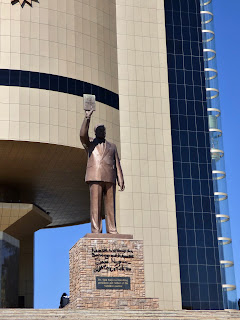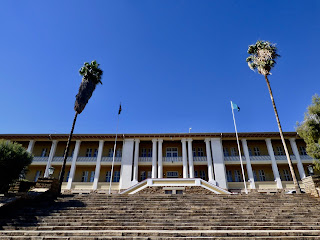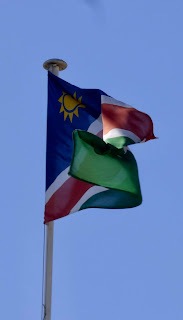Namibia
June 11-22
Although Namibia did not become an independent state until 1990, its history goes back 800,000 years with the presence of aboriginal humans. Rock paintings have been discovered that are over 27,000 years old, but it wasn’t until 1498 that Diogo Cao was to be the first European to arrive on the central coast. Different indigenous tribes settled in both the north and the south and, except for some skirmishes now and then over land, all was peaceful and the population was left to grow its herding and pastoral settlements.
Britain began an annexation of offshore islands in 1866 and Walvis Bay on the coast became a part of the Union of South Africa in 1910. Germany took control of the rest of the country in the 1880’s and so began the end of a peaceful existence for the tribes, noted especially by rebellions of the Herero and Nama in the early 1900’s. South Africa invaded the colony in 1915 and was given a mandate to govern Namibia five years later. Armed struggles followed on and off for the next fifty years and, like other countries in Africa, Namibia’s history was as a pawn in the hands of colonial powers until the United Nations got involved to oversee a transition to independence and elections in 1989.
Unity, Liberty, and Justice are the motto of this newly developing African nation and its national anthem, NAMIBIA, LAND OF THE BRAVE is a testament to freedom gained through bravery, loyalty, and love.
June 11
My arrival in Windhoek, the capital city, and a short afternoon tour...
Independence Memorial Museum
A fascinating multi-level museum that chronicles the history of Namibia and its struggles against the colonial powers that tried to control it.
Christurkirche
An historic landmark, this Lutheran Church was built between 1907-1910 following the wars between the Germans and the Khoikhoi, Herero, and Owambo tribes
Parliament
Parliament Gardens
Katutura Township
Just a glimpse of this sprawling area north of the city formed in 1961 when the South African colonial administration forcibly removed the black population from the more desirable downtown neighborhoods. The extreme poverty of Katutura Township is in marked contrast to the upscale shops and restaurants at the other end of Independence Avenue, a short drive away.
Advertisement Along The Road
and a mighty fine beer it is...
The Namibian Flag
Sun - Life and Energy
Gold - Plains and the Desert
Blue - Sky, Ocean, Rain, and Water
Red - People of Namibia
White - Unity and Peace
Green - Natural Vegetation and Agricultural Resources









No comments:
Post a Comment